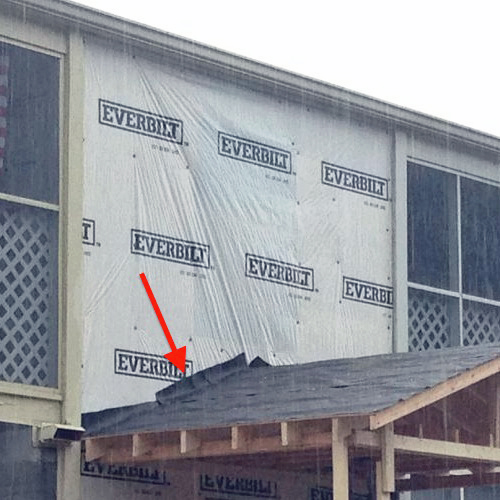
Image Credit: All photos: Energy Vanguard
I don’t think I can ever say it enough, but the building enclosure consists of several control layers and each one has its job. The primary control layer is the one that keeps liquid water out, and it can be a tricky business.
Take the case of this condo building (yes, it’s in the community where I live). It’s got several problems, so I went to bat for building science here.
We’re having a couple of porticos built, and one day I noticed one of them in the stage of construction you see above. These buildings have no overhang, so that wall will get wet. The contractor put housewrap on the wall and then built the portico. The felt on the roof, as you can see, goes up the wall a bit, but on the outside of the housewrap. Problem?
Yes, that’s a problem. Any water coming down on the outside of the housewrap can go right down behind the felt and rot out the framing of that portico. Did I mention the building has no overhang?
I saw that I had still had a chance to help get it done right, so I talked with the president of the homeowners’ association and told him we need to make the contractor do it correctly. The housewrap needs to come down over the roof underlayment.
Also, since they hadn’t yet cut the housewrap for the window, I printed out the instructions on how to do that, too. Unfortunately, I wasn’t able to talk to the contractor directly at that point, so here’s what it looked like after a few days:
They did the standard window cut for the housewrap — a big X — then put the window on top of the housewrap and put flashing tape all the way around, on top of the housewrap. If no water ever gets behind the house wrap, this might be OK. On this building, with no overhang, it’s quite possible that water can get behind the house wrap. The tape on top of the house wrap wouldn’t help, and the window framing could rot.
They also didn’t fix the flashing detail at the roof. Notice they installed step flashing — but put it on top of the felt, which is still on top of the housewrap. Ugh!
Finally, we arranged a meeting with the contractor that I could attend, and we got things straightened out. Here’s what they corrected:
- We got them to replace the housewrap with a vapor permeable material, not just perforated plastic. (See Matt Risinger’s article and video about this. I’ll write more about it in a future article, too.)
- The housewrap now comes down over the flashing at the roof intersection.
- The housewrap comes down over the top piece of window flashing tape.
It’s not perfect. They should have kept those nails at the roof intersection above the step flashing that runs beneath the housewrap. But it’s far, far better than we got initially.
Allison Bailes of Decatur, Georgia, is a speaker, writer, energy consultant, RESNET-certified trainer, and the author of the Energy Vanguard Blog. Check out his in-depth course, Mastering Building Science at Heatspring Learning Institute, and follow him on Twitter at @EnergyVanguard.
Weekly Newsletter
Get building science and energy efficiency advice, plus special offers, in your inbox.





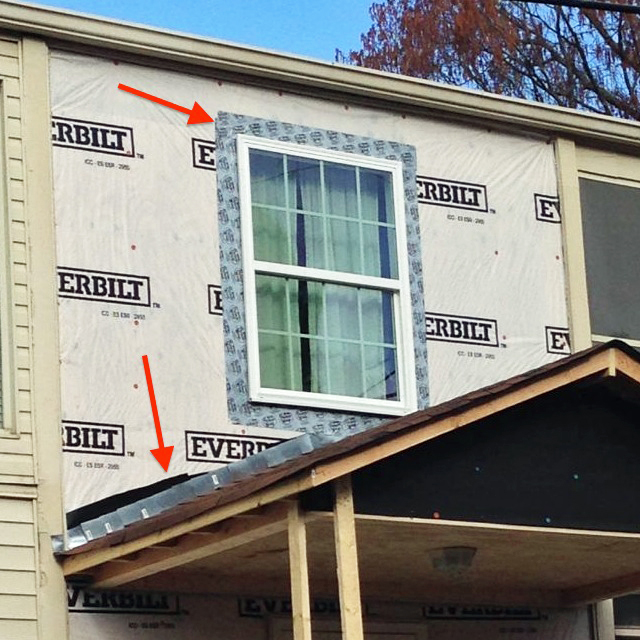

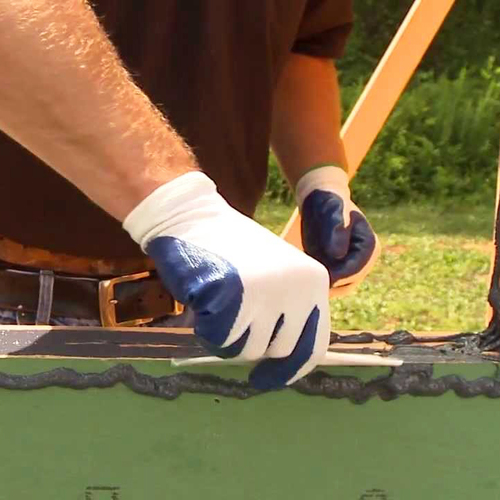
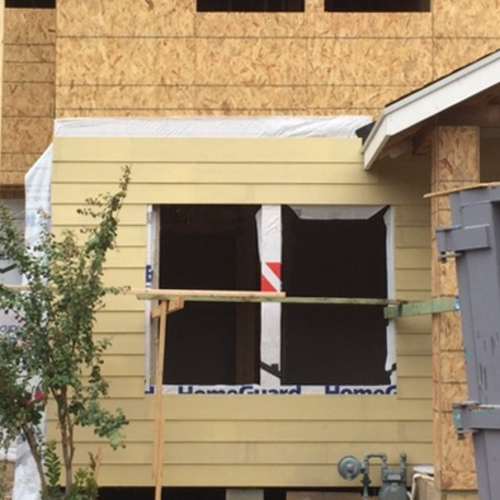
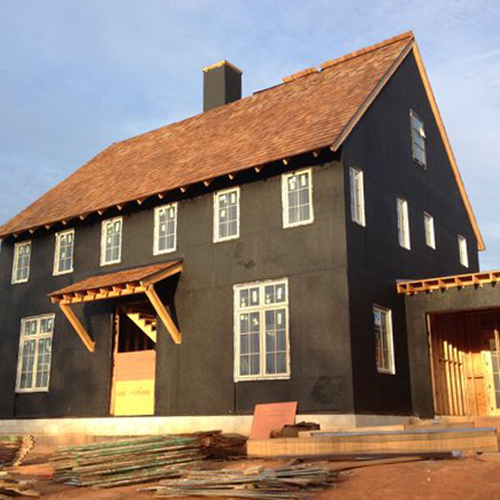
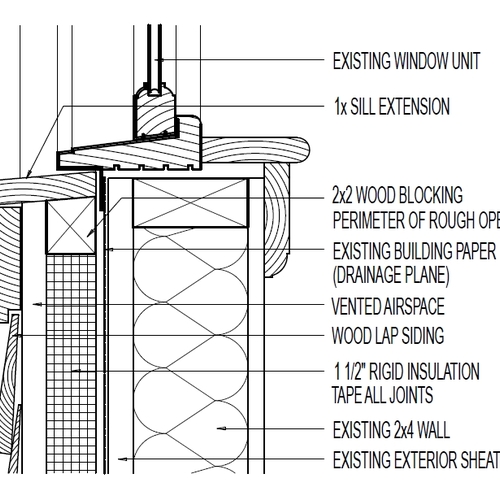






3 Comments
Vapor permeable versus Perforated Plastic
Regarding the Matt Risigner Video demonstration: He performs a test that demonstrates that a vapor permeable material, Tyvek, is superior to a pin perforated plastic. I believe that to be true. The demo is impressive but is it realistic?
I want the materials that I use to do the job but I do not wish to pay more than I need to accomplish that goal. In the demo, glasses of water are used to simulate the pressure created by environmental forces. If 50 Pascals is roughly equivalent to a 0.20" water column or a 20MPH wind then the weight of the glass + about 3" of water would be 40 times that or equivalent to 2,000 Pascals or an 800mPH, enough to make a Category 5 Tornado look like a dust devil by comparison. It's nice to know that Tyvek won't leak under those conditions but why would I care. I believe the question is: How good a job does the perforated plastic do at realistic pressure levels behind pressure equalizing cladding? Perhaps the perforated plastic might perform well up to a Category 2 to 3 Hurricane and then leak a tad but it is, after all, vapor permeable and could dry out. After a natural wind disaster, it would be devastating to return to my rubble strewn former home, now nothing but a pile of debris, and find that the area behind my Weather Resistant Barrier was moist.
OK, I do understand Mr. Risinger's point and I had a little fun with this, but the question remains: How well does the pin perforated plastic perform under actual conditions and might that not be quite well, and better than I'd ever need it to. Why would I pay $160 per roll for the vapor permeable house wrap when I could get the result I need with the $87 product, any more that I'd by a Maserati to keep the rain off when on the road when a Ford would do quite nicely ?
You indicated that you will write more about it in a future article. Answering the above question would be helpful.
Thanks,
Ted Cummings
Response to Ted Cummings
Ted,
In general, most building scientists report that non-perforated plastic housewraps perform better at some tests than perforated plastic housewraps.
Here's my opinion: if the housewrap faces a ventilated rainscreen gap, the difference in performance between these two types of housewrap disappears.
In short, the construction details and installation methods matter more than the type of wrap you choose to install. Do a conscientious job; lap the product carefully; avoid tears and extra holes; and include a ventilated rainscreen gap. If you do that, you're in good shape.
For more information on this topic, see All About Water-Resistive Barriers.
Rain screen
One of the effects of having rain screen mandated in our code is that it has to be inspected. That means the whole house must be completed at once. Projects are often papered or wrapped, the strapping installed, but then sit for some time exposed to the elements before siding is put up. So from my perspective what matters is the WRB's ability to resist UV and mechanical damage due to wind. Because of that I've gone in the opposite direction and now use Commercial Tyvek. I guess it really depends on the climate as to how important the WRB is. Here in the PNW it's something I wouldn't skimp on.
Log in or create an account to post a comment.
Sign up Log in